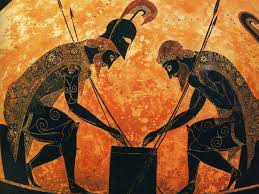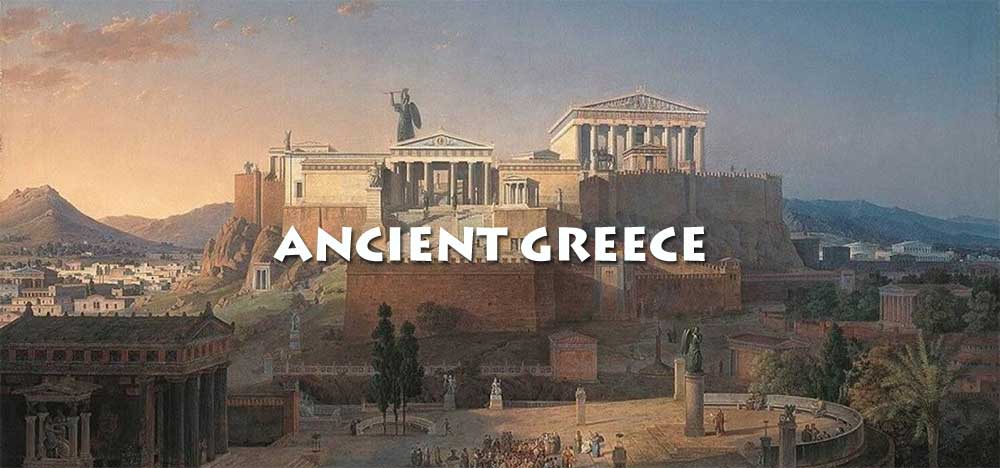Exekias the Master Potter and Painter of Ancient Greece
 Exekias stands out as one of the most renowned and talented figures in the realm of ancient Greek pottery, particularly during the Archaic period. His life and work, spanning the late 6th century BCE, underscore his mastery in both potting and painting, particularly within the black-figure technique. Although specific details about his personal life remain shrouded in mystery, much like many artists of his era, the legacy he left through his creations offers invaluable insights into his skill, creativity, and influence on the art of pottery in ancient Greece.
Exekias stands out as one of the most renowned and talented figures in the realm of ancient Greek pottery, particularly during the Archaic period. His life and work, spanning the late 6th century BCE, underscore his mastery in both potting and painting, particularly within the black-figure technique. Although specific details about his personal life remain shrouded in mystery, much like many artists of his era, the legacy he left through his creations offers invaluable insights into his skill, creativity, and influence on the art of pottery in ancient Greece.
Exekias likely lived and worked in Athens, the heart of ancient Greek civilization and a burgeoning center for artistic and cultural development during his time. The exact dates of his birth and death are unknown, but his most active period is generally placed between 545 and 530 BCE. Born into a society that valued art and craftsmanship, Exekias would have been immersed in a culture rich with myths, legends, and a deep appreciation for the aesthetics of everyday objects.
Mastery in Pottery and Black-Figure Technique
Exekias is best known for his work in the black-figure technique, a style of pottery decoration that involved painting scenes on the surface of clay vessels with a slip that turned black during the firing process. Details were then incised into the black slip to reveal the red clay beneath, allowing for intricate designs and narratives to be depicted. Exekias not only excelled in this technique but also pushed its boundaries, achieving levels of detail and expression that were unprecedented.
His dual role as both potter and painter was somewhat unusual for the time, as the tasks were often separated, with different individuals specializing in either shaping the vessels or decorating them. This dual expertise allowed Exekias a greater degree of control and creativity in his work, as he could envision and execute his designs with a comprehensive understanding of form, balance, and decoration.
Notable Works
Among Exekias’s most famous works are the “Dionysus Cup” (or “Kylix”) and the “Achilles and Ajax Playing a Game” amphora. The Dionysus Cup depicts the god Dionysus reclining on a ship surrounded by vines, showcasing Exekias’s skill in composition and his ability to infuse his subjects with a sense of life and movement. The “Achilles and Ajax Playing a Game” amphora is renowned for its depiction of the two heroes engaged in a tense game of dice, moments before they return to the battle of Troy. This piece is particularly admired for its portrayal of human emotion, the detailed rendering of the figures’ armor and attire, and the effective use of space within the composition.
Legacy and Influence
Exekias’s work had a profound impact on the development of Greek pottery, influencing countless artists and shaping the evolution of the black-figure technique. His ability to convey complex narratives, emotion, and intricate detail in his designs set new standards for pottery decoration and artistic expression in ancient Greece.
His legacy extends beyond his own time, with his works continuing to be studied and admired for their artistic merit, technical mastery, and the window they provide into the cultural and mythological landscape of ancient Greece. Exekias remains a pivotal figure in the history of art, embodying the creativity, skill, and innovation that characterized the best of ancient Greek pottery.
